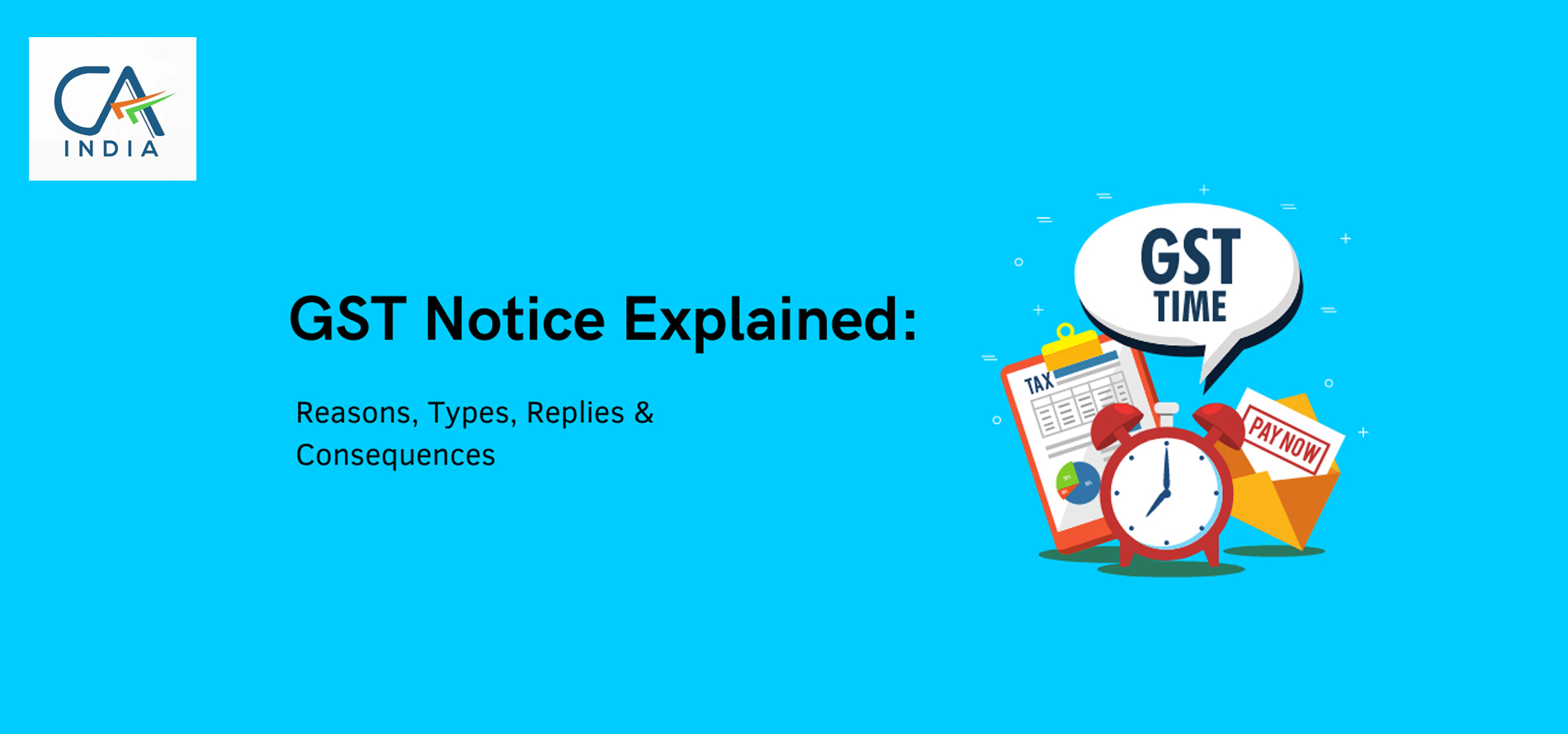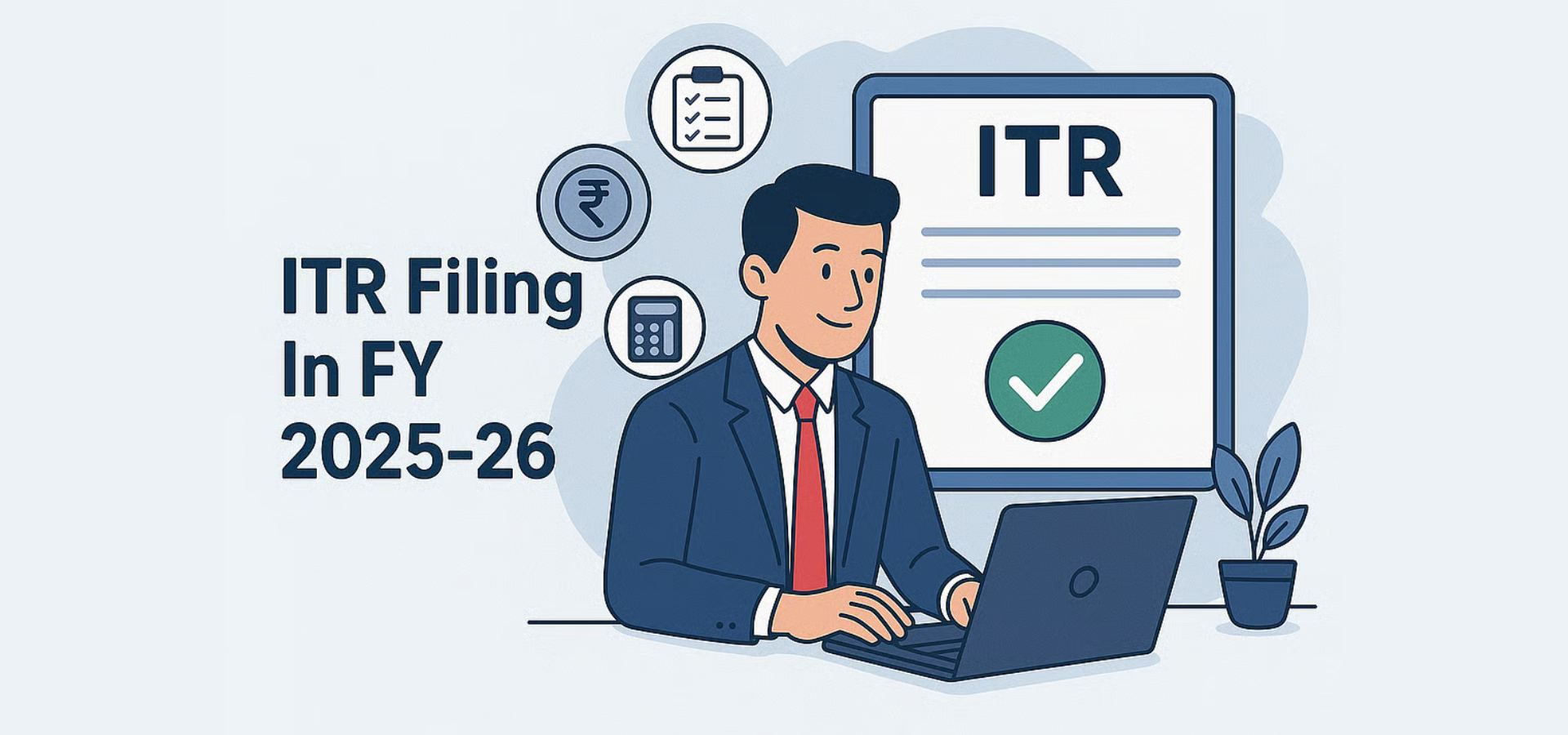
Understanding GST Notices: Types, Reasons & How to Respond
Received a GST notice and don’t know what to do?
Relax—we’re here to decode it for you.
Under the GST regime, getting a notice doesn’t always mean you’re in trouble. But ignoring it? That can get serious. This blog will help you understand the types of GST notices, why they’re issued, and how to respond—step by step.
What Is a GST Notice?
A GST notice is an official communication from the Goods and Services Tax Department informing you of:
- Missing filings
- Discrepancies in returns
- Possible defaults
- Or even audit/verifications
Some notices are informative, while others require action or explanation within a deadline.
1. Notice for Non-Filing of Returns
Reason: You’ve missed filing one or more GST returns.
📍 What to do: File the pending returns immediately to avoid penalties and late fees.
2. Show Cause Notice (SCN)
Form: Varies (often under Section 73 or 74)
Reason: Suspected tax evasion, short payment, or wrong ITC claim.
📍 What to do: Submit a detailed reply with documents supporting your case. You may also attend a personal hearing if called.
3. Scrutiny Notice
Form: ASMT-10
Reason: Officer found mismatches in your filed returns (e.g., GSTR-1 vs GSTR-3B, or GSTR-3B vs 2A/2B).
📍 What to do: Reply with clarification or file a revised return (if error is on your part) via Form ASMT-11.
4. Notice for Cancellation of Registration
Form: REG-17
Reason: GST officer suspects your registration is not valid or inactive, or due to non-compliance.
📍 What to do: Respond with proper reasoning in Form REG-18 within 7 days.
5. Intimation of Tax Liability (Mismatch in ITC)
Form: DRC-01A
Reason: Mismatch between ITC claimed and actual data from GSTR-2A/2B.
📍 What to do: You can pay voluntarily in DRC-03 or reply with justification.
6. Audit Notice
Form: ADT-01
Reason: Your business is selected for a GST audit.
📍 What to do: Prepare books, ledgers, invoices, and cooperate with GST officers.
Why You May Receive a GST Notice
Here are some common triggers:
- Non-filing or delayed returns
- Excessive or ineligible ITC claims
- Mismatch between GSTR-1 and GSTR-3B
- Sales reported in e-way bills but not in returns
- High-value transactions without proper justification
- PAN errors or inactive GSTIN usage
How to Check and Respond to a GST Notice
Step-by-Step:
- Loginto the GST portal (https://www.gst.gov.in).
- Go to “Services → User Services → View Notices and Orders.”
- Download the notice (PDF format).
- Understand the form type, section, and due date.
- Prepare your reply with explanations and evidence.
- File reply online through appropriate form (e.g., ASMT-11, DRC-06, etc.)
- E-sign and submit.
- Track status regularly for updates or response from the department.
What Happens If You Ignore It?
❌ Late response or no response can lead to:
- Penalties and interest
- Cancellation of GST registration
- Recovery proceedings
- Blocking of ITC
- Legal prosecution (in extreme cases)
Pro Tips to Handle GST Notices
✅ Maintain accurate and timely records
✅ Reconcile GSTR-1, GSTR-3B, and GSTR-2A/2B monthly
✅ Don’t delay return filing—even nil returns
✅ Consult a tax professional if unsure
✅ Always respond within deadline—even if it’s just to ask for an extension
Final Thoughts
GST notices aren’t always bad news—but ignoring them is.
Stay alert, keep your records in check, and respond on time. The good news? Most issues are easily fixable with the right response and documentation.








